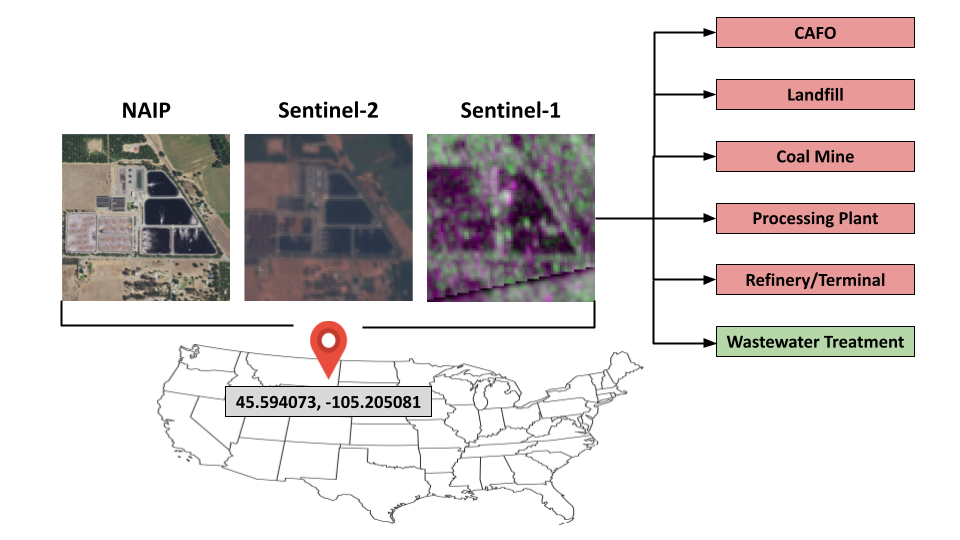How did we collect and label METER-ML?
METER-ML consists of 86,625 georeferenced NAIP, Sentinel-1, and Sentinel-2 images in the U.S. labeled for the presence or absence of methane source facilities including concentrated animal feeding operations (CAFOs), coal mines, landfills, natural gas processing plants (Proc Plants), oil refineries and petroleum terminals (R&Ts), and wastewater treatment plants (WWTPs).
Images in METER-ML
We collected locations of methane emitting infrastructure in the U.S. from a variety of public datasets. We additionally included a variety of images in the dataset which capture none of the six methane emitting facilities (Negatives). All of the locations were paired with three publicly available remotely sensed image sources, namely aerial imagery from the USDA National Agriculture Imagery Program (NAIP) as well as satellite imagery captured by Sentinel-1 (S1) and Sentinel-2 (S2). We included the three visible (RGB) and single near-infrared (NIR) bands from NAIP and S2, the single coastal aerosol (CA) band, four red-edge (RE1-4) bands, single water vapor (WV) band, single cirrus (C) band, and the two shortwave infrared (SWIR1-2) bands from S2, and the V-transmit (VH and VV) bands from S1. Images capture a 720m x 720m footprint. Imagery was processed and downloaded using the Descartes Labs platform.
Expert-labeled Validation and Test Sets
Two Stanford University postdoctoral researchers with expertise in methane emissions and related infrastructure individually reviewed 1,534 examples to compose the held-out validation and test sets. Their consensus was used as the final label in these sets.
